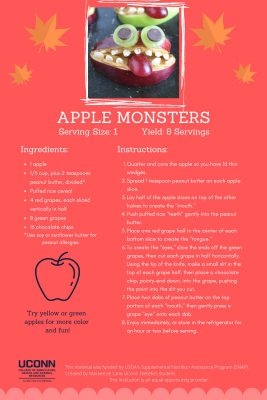 Throughout the month of October, we’ll be featuring healthy Halloween treats. This week we’re featuring Apple Monsters! Have fun making these with your little “goblins.” Find the recipe here.
Throughout the month of October, we’ll be featuring healthy Halloween treats. This week we’re featuring Apple Monsters! Have fun making these with your little “goblins.” Find the recipe here.
Be sure to check out other tasty, healthy and low-cost recipes here: https://communitynutrition.cahnr.uconn.edu/recipes/